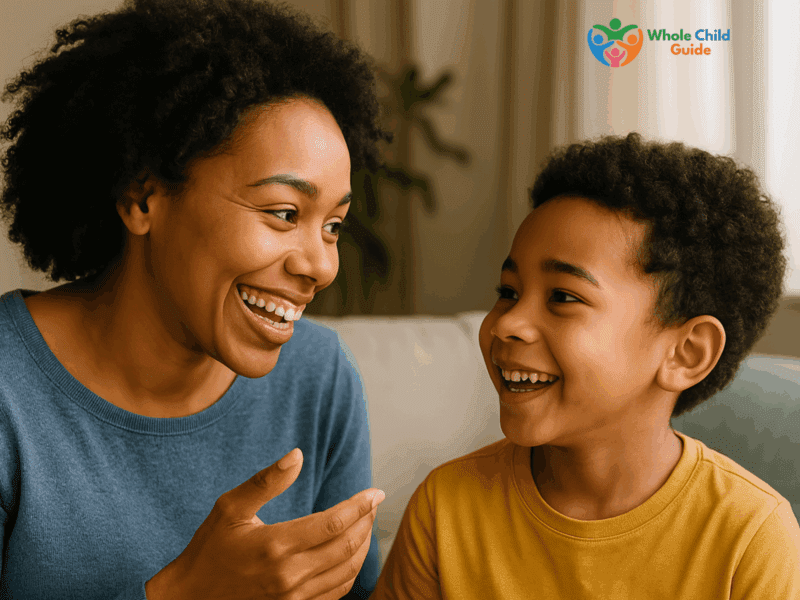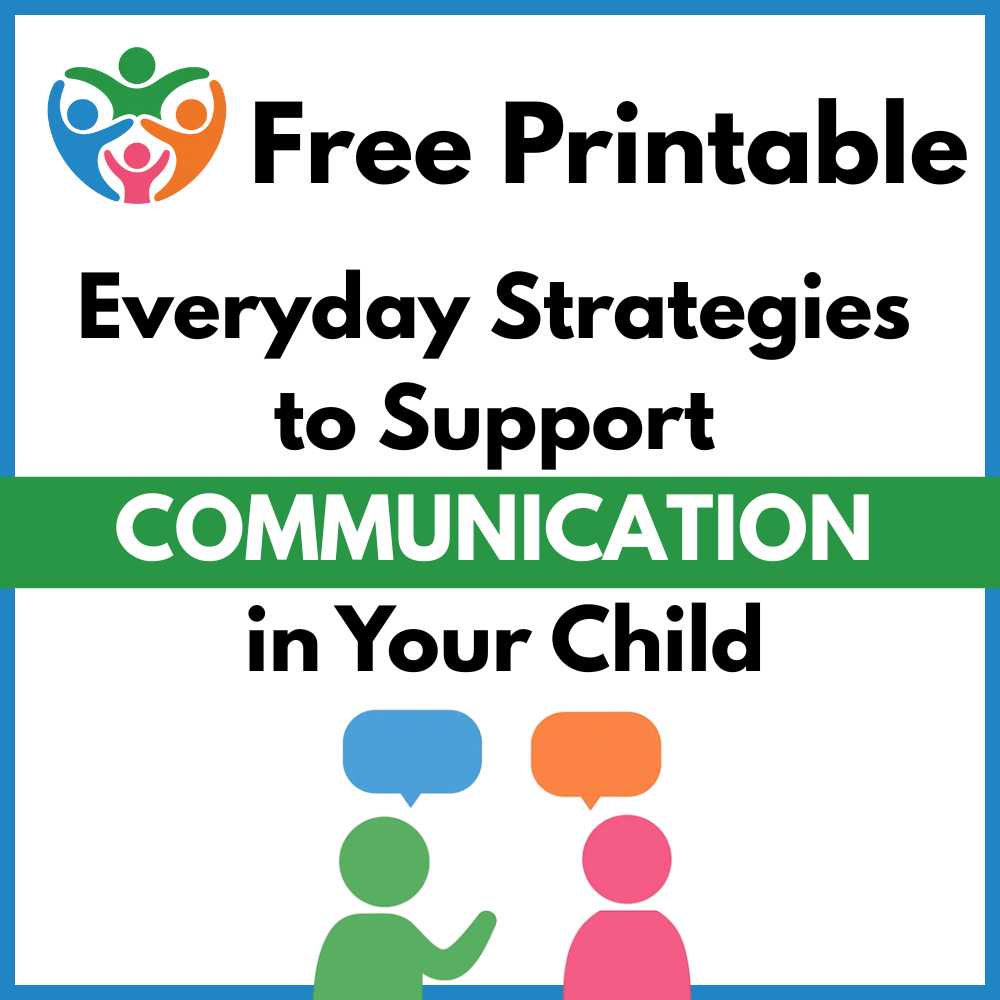
Language and communication happen all day long even before the child says their first words. From snack time to story time, your daily routines are filled with opportunities to build your child’s communication skills. Whether they’re learning their first words or starting to form complex sentences, language development is closely tied to connection, interaction, and play.
In this post, we’ll explore easy, natural ways to support your child’s expressive and receptive language throughout the day, and no flashcards or structured programs are required.
Be sure to grab the free printable: Everyday Strategies for Language & Communication, perfect for posting on the fridge or sharing with caregivers and therapists. Grab it at the bottom of this page.
This post is part of our series on Parenting Support, guiding you through easy, real-life routines that nurture your child’s development across ten key areas of development. Today’s focus: language and communication.
Why Language & Communication Skills Matter
Language is the foundation for learning, behavior, and relationships. When children can understand what’s being said and express their needs effectively, they’re more confident, more connected, and better able to engage with their world.
Strong communication skills support:
- Emotional regulation (naming feelings, expressing needs)
- Social interaction (taking turns, making friends)
- Academic readiness (following directions, building vocabulary)
The thing is that communication and language play a role in social and emotional skills, regulation, and life skills. It’s all connected. And, these skills can grow through everyday life. As professionals working with kids, in the schools or in clinics, we love to support the language and communication aspect through daily life skills because it’s meaningful.

3 Everyday Routines That Boost Language Development
If you have a child that has struggled with language or communication, you might have explored speech therapy options in the past. Maybe your child is even participating in speech and language therapy services right now. The biggest contributor to progress however, is going to be incorporating strategies into the everyday tasks at home.
Here are three simple, evidence-based ways to build communication into your family’s daily rhythm:
1. Talk Through Tasks…Even the Boring Ones
During routines like getting dressed, washing hands, or packing a lunch, narrate what you’re doing. Use clear, simple language:
“First we put on your shirt. Now your socks. Where’s the other sock?”
These moments model vocabulary, sentence structure, and sequencing. These are all key building blocks of language.
Why it works: Repeated exposure in real-life situations helps children attach meaning to words and actions.
2. Pause and Wait. And Give Time to Respond
During story time or play, resist the urge to fill in all the blanks. Ask open-ended questions and then… pause. Give your child time to think and respond.
“What do you think will happen next?” or “How does the puppy feel?”
Why it works: Children process language at their own pace. A simple pause gives their brain time to catch up and encourages expressive speech.
3. Use Snack Time as Conversation Time
Turn snack time into connection time by chatting about textures, tastes, and preferences. Encourage choice-making and sharing opinions.
“Do you want the apples or crackers?” “Mmm, this banana is soft. What do you think?”
Why it works: Eating is a multisensory experience, and engaging in conversation during meals helps expand descriptive vocabulary and social communication.
Language & Behavior Are Connected
It’s not uncommon for children with communication challenges to also struggle with behaviors. When kids can’t express their needs, they may resort to acting out. The child, in most cases, is not trying to be difficult, but to be understood.
That’s why building communication skills supports more than just vocabulary. It promotes emotional regulation, reduces frustration, and strengthens your bond.
Want to dive deeper into this connection? Read our post on Everyday Routines to Support Behavior and Emotional Regulation.
Support That Grows With Your Child
Every child is unique, and so is their communication journey. The strategies that we listed above are just three simple ways to work on language and communication. We have a printable handout that has even more ideas and it’s a great tool for supporting these needs at home and in therapy sessions.
Download your free Language & Communication printable here.
Stay tuned as we continue this series, including posts on all aspects of child development.


